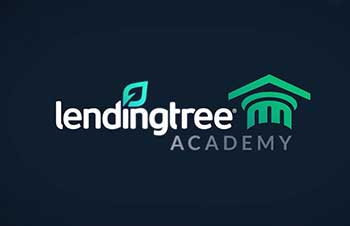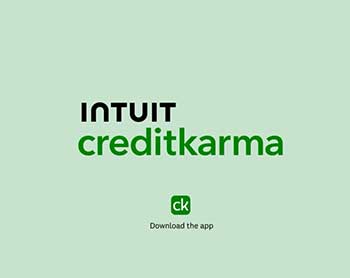If you’re looking to take out a loan or monitor your credit, you’ve likely come across LendingTree and Credit Karma. These are two of the most popular online financial services, but they serve different purposes.
This comprehensive guide examines the key features, pros, cons, and differences between LendingTree and Credit Karma to help you decide which one is better suited for your needs.
A Brief Comparison Table
| Features | LendingTree | Credit Karma |
| Services Offered | Loan marketplace to compare personalized rates and offers from multiple lenders | Free credit scores, full reports, monitoring, and simulation tools |
| Loan Applications | Facilitates loan applications by matching borrowers with lenders | Does not offer loan applications |
| Credit Scores | Limited access to credit scores | Provides free weekly updated scores from TransUnion and Equifax |
| Credit Reports | No access to full reports | Free full credit reports from TransUnion |
| Credit Monitoring | None | Yes, weekly updates on credit reports and scores |
| Prequalification | Offers prequalification to view rates without hard credit check | No prequalification options |
| Recommendations | General recommendations | Personalized recommendations for credit cards and loans based on your credit profile |
| Revenue Model | Earns fees when lender leads convert to loans | Earns fees by showing targeted ads and recommendations |
Overview Of LendingTree
LendingTree operates an online loan marketplace, connecting borrowers with lenders offering personal loans, mortgages, business loans, and more.
Here are some key things to know about LendingTree:

- Loan marketplace: LendingTree doesn’t directly lend money. Instead, it provides a platform for customers to compare loan offers from different lending partners after completing just one form. This allows you to shop for the best rates and terms.
- Wide variety of loans: Via LendingTree’s marketplace, you can access personal loans, mortgages, auto loans, business loans, student loans, and more from an extensive network of lenders.
- Pre-qualification: LendingTree allows you to check loan offers and rates through its marketplace without impacting your credit score. However, to finalize a loan, the lender will conduct a hard credit inquiry.
- Lender vetting: LendingTree claims to vet all lending partners on their marketplace to ensure they are legitimate lenders with ethical practices. However, users should still do their due diligence.
- Fees: While using LendingTree’s loan marketplace is free for borrowers, lenders pay a fee when leads convert to loans. LendingTree collects revenue from these fees.
Overview Of Credit Karma
In contrast to LendingTree, Credit Karma is focused on providing free credit scores, reports, and monitoring.
Here’s an overview:

- Free scores and reports: Members can easily access credit scores from TransUnion and Equifax as well as full credit reports completely for free, unlike some other services.
- Credit monitoring: Credit Karma updates your TransUnion credit report every week instead of every 30 days like most credit monitoring services. This enables you to stay on top of any changes.
- Simulation tools: The platform includes tools to simulate actions like taking out a loan or credit card and see the potential impact on your credit score.
- Targeted recommendations: Based on your credit profile, Credit Karma provides customized recommendations for credit cards and loans you may qualify for. However, they only suggest partner lenders.
- No hard credit check: Using any of Credit Karma’s free tools and services will not require a hard inquiry and won’t hurt your credit score.
- Ad model: Credit Karma makes money by showing users targeted recommendations and ads from banks, lenders, and other financial services partners.
Also Read: Comparison Between SmartCredit And IdentityIQ
Now that we’ve provided an overview, let’s compare the key pros and cons of each service.
Pros And Cons Of LendingTree And Credit Karma
LendingTree Pros
- Access to an extensive loan marketplace
- Compare personalized rates and offers from multiple lenders at once
- Loan pre-qualification doesn’t require a hard credit check
- Wide variety of loan types available
- Tools and resources to inform and educate borrowers
LendingTree Cons
- Not an actual lender
- Need to provide sensitive personal data
- Too many options can make it overwhelming
- Must submit formal application once you choose a lender
- Revenue comes from advertiser fees, potential conflict of interest
Credit Karma Pros
- Completely free credit scores, reports, and monitoring
- Credit monitoring updates weekly, faster than most similar services
- Recommendations and simulations won’t impact your credit score
- Intuitive interface and easy to understand credit information
- Helpful tips and tools to improve your credit health over time
Credit Karma Cons
- Limited to recommendations for partner lenders only
- Makes money through ads, so recommendations are not impartial
- Credit scores shown may differ slightly from FICO scores some lenders use
- No option to compare personalized pre-approved rates upfront
- Does not offer access to actual loan marketplace
Now that you know the pros and cons of each platform, let’s compare them across a few key factors that often matter most to consumers.
Also Read: Comparison Between Thrivent And Fidelity.
Key Feature Comparison Between LendingTree And Credit Karma
| Feature | LendingTree | Credit Karma |
| Loan Marketplace Access | Yes | No |
| Credit Scores and Reporting | Limited access | Yes, free access |
| Credit Monitoring | No | Yes, weekly TransUnion updates |
| Pre-qualification Checks | Yes | No |
| Loan Recommendations | General | Personalized |
| Advertiser Relationships | Yes | Yes |
Based on this comparison, you can see that LendingTree is the better option if you want to access a loan marketplace and shop for the best loan rates and terms. The ability to easily compare multiple lenders at once is LendingTree’s biggest strength.
However, Credit Karma is the better choice if you mainly want to monitor your credit health over time and get free access to scores and reports. The free credit monitoring provides ongoing visibility, while the simulation tools allow you to see how certain decisions may impact your credit without actually taking them.
Now let’s walk through how each of these services works step-by-step.
How LendingTree Works
Here is an overview of how getting a loan through LendingTree’s marketplace works:
- Enter your loan requirements – Detail the loan amount, purpose, type, and other financial information to match your needs.
- Provide personal details – Enter basic personal information so lenders can provide accurate rate quotes. No hard credit check at this point.
- Compare loan offers – LendingTree will match you with lenders whose loan options meet your criteria. Compare offers side-by-side.
- Choose a lender – Select the lender and loan option that best matches your needs in terms of rates, fees, and terms.
- Finalize the loan – The lender will do a hard credit check and formal application. If approved, work with them directly to finalize the loan.
- Loan funded – The lender will fund the loan directly once the final application is approved and paperwork complete.
The key value is being able to easily view multiple personalized loan offers after just one form. This simplifies the loan shopping process.
Watch more about this!
How Credit Karma Works
Here is an overview of how Credit Karma’s free credit tools and services work:
- Sign up – Create a free Credit Karma account with your basic personal details and accept the terms.
- Access credit scores – Immediately view your latest credit scores from TransUnion and Equifax, updated weekly.
- Review full reports – Monitor your full credit reports from TransUnion to understand what’s impacting your scores.
- Use simulation tools – Simulate actions like taking out a loan to estimate how it may impact your credit score.
- Check recommendations – View personalized recommendations for credit cards or loans you may qualify based on your credit profile.
- Monitor changes – Credit Karma will email any time something important changes in your credit report or scores.
The free access to scores, reports, simulations, and monitoring in one place provides significant value for understanding your financial health.
Now that you understand the step-by-step processes, let’s dive into a few common questions people have about these two services.
Also Read: Comparison Between LPL Financial And Fidelity.
Frequently Asked Questions (FAQ)
LendingTree provides more robust loan shopping capabilities. By letting you easily view and compare personalized loan offers from multiple lenders at once, it simplifies the process of finding your best option. Credit Karma itself does not facilitate loan applications.
Yes, LendingTree is a reputable loan marketplace used by millions of consumers. The ability to compare quotes from multiple lenders is very beneficial. Just be sure to vet any lender carefully before submitting a full application.
The credit scores shown on Credit Karma can differ from your true FICO score by plus or minus 15 points or so. This is because they use VantageScore instead. But the scores give you a very close approximation of your credit health.
No. LendingTree does not directly lend money. They only provide an online marketplace for connecting consumers with lenders offering loans they may qualify for. You borrow directly from the lender you choose.
Also Read: Comparison Between Snap Finance And Acima.
The Bottom Line
Which Should You Use?
Here are some simple guidelines for deciding whether LendingTree or Credit Karma is better for your needs:
- If you are currently shopping around for the best loan rates and terms, use LendingTree to compare quotes.
- If you want free access to credit scores, reports, and monitoring, use Credit Karma for those services.
- Use both if you want the loan shopping capabilities of LendingTree plus the free credit monitoring of Credit Karma.
- Stick with Credit Karma if you only need general credit education and monitoring, not actual loans.
- Prefer LendingTree if you will apply for multiple types of loans and financing over time to save on effort.
In summary, while LendingTree and Credit Karma have some overlap in providing insights into your finances, they excel in different areas. LendingTree offers the easiest way to compare multiple lenders, while Credit Karma provides completely free credit tracking and simulation tools. Evaluate your specific needs, then decide which one is the better fit.
When it comes to comparing LendingTree Vs. Credit Karma, there is no universally “better” option. LendingTree provides the best loan marketplace and ability to compare offers upfront. But Credit Karma is the way to go for accessing free credit scores, full reports, and ongoing monitoring.
Consider how you plan to use these financial services before deciding. If you’re mainly looking to get approved for loans with the best rates, LendingTree is likely the better choice. But if you prioritize monitoring your long-term credit health, opt for Credit Karma’s suite of free tools.
Whichever platform you choose, be sure to fully research any lenders before providing sensitive information or submitting applications. Use these online tools as a starting point, not the final word. Take your time, evaluate all options, and make the decision that best aligns with your financial situation and goals.

